Home » Home Improvement
Category Archives: Home Improvement
Split System Air Conditioner Adelaide: Choosing the Right Split System Air Conditioner for Adelaide Homes
Adelaide, the capital city of South Australia, is renowned for its Mediterranean climate, characterised by sweltering summers and mild winters. With temperatures often reaching scorching levels during summer, it becomes imperative for Adelaide residents to equip their homes with effective cooling solutions. Among the array of options available, the split system air conditioner has gained popularity owing to its adaptability, energy efficiency, and suitability for local weather conditions. Nevertheless, selecting the ideal split system air conditioner demands thoughtful deliberation of various factors to ensure optimal cooling performance and comfort. This article delves into guiding Adelaide homeowners on choosing the most suitable split system air conditioner to maintain a cool and pleasant indoor environment throughout the summer season.
Understanding Split System Air Conditioners:
Split system air conditioners comprise two primary components: an indoor unit and an outdoor unit. Positioned on a wall or ceiling, the indoor unit houses the evaporator coil, which is highly responsible for cooling the indoor air. Meanwhile, the outdoor unit houses the compressor, condenser coil, and expansion valve, which work together to release heat absorbed from the indoor air. This split configuration offers several advantages, including quieter operation, improved energy efficiency, and greater flexibility in installation compared to traditional window units or ducted systems.
Factors to Greatly Consider When Choosing a Split System Air Conditioner:
Cooling Capacity:
The first step in choosing the right split system air conditioner is determining the cooling capacity required to effectively cool the intended space. Factors such as room size, ceiling height, insulation, and the number of occupants significantly influence the cooling load. Adelaide’s hot summers may necessitate higher cooling capacities, especially for larger rooms or open-plan living areas.
Energy Efficiency:
As energy expenses escalate and environmental awareness grows, prioritising energy efficiency becomes paramount in choosing a cooling system. Seek out split system air conditioners boasting high energy efficiency ratings, particularly those equipped with inverter technology. Compressors driven by inverters dynamically regulate their speed in response to cooling requirements, leading to notable energy conservation compared to non-inverter counterparts. Moreover, opt for a split system air conditioner featuring programmable timers and energy-saving modes to augment efficiency and curtail electricity costs even further.
Climate Suitability:
Adelaide’s climate presents unique challenges, with hot summers and occasional heat waves requiring reliable cooling solutions. When choosing a split system air conditioner, opt for models specifically designed to withstand high temperatures and operate efficiently in Adelaide’s climate.
Noise Level:
Quiet operation is undeniably essential for maintaining a comfortable indoor environment, particularly during nighttime or in noise-sensitive areas. When selecting a split system air conditioner, consider the noise levels generated by both the indoor and outdoor units. Look for models equipped with advanced noise reduction technologies, such as sound-dampening insulation, variable-speed compressors, and fan blade designs optimised for minimal noise output.
Installation Requirements:
Proper installation is undeniably critical to the performance and longevity of a split system air conditioner. Consider factors such as available space for mounting the indoor unit, accessibility for running refrigerant lines and electrical wiring, and any potential obstructions that may affect airflow. Hiring a licensed HVAC technician experienced in split system installations can ensure professional installation and optimal system performance.
Brand Reputation and Warranty:
When investing in a split system air conditioner, it’s essential to choose an experienced, reputable brand known for reliability, performance, and excellent customer service. Research different brands and read customer reviews to gauge satisfaction levels and identify any common issues. Additionally, check the warranty coverage offered by the manufacturer, including both parts and labour.
Choosing the right split system air conditioner is crucial for Adelaide homeowners seeking relief from the summer heat while maintaining energy efficiency and comfort. By considering crucial factors such as cooling capacity, energy efficiency, climate suitability, noise level, installation requirements, brand reputation, and warranty coverage, homeowners can make an informed decision and select a system that meets their specific needs and budget. Investing in a high-quality split system air conditioner tailored to Adelaide’s climate can provide reliable cooling performance, improved energy efficiency, and enhanced comfort for years to come. With the right choice, you can beat the heat and enjoy a cool and comfortable home environment throughout the summer months.
Roller Blinds Adelaide: A Practical Solution for Adelaide’s Climate
Adelaide boasts a Mediterranean climate characterised by hot, dry summers and mild winters, with temperatures often soaring during the summer months and the occasional heatwave; finding effective ways to manage sunlight and maintain comfortable indoor temperatures becomes paramount for Adelaide residents. In this regard, sleek roller blinds emerge as a practical and versatile solution perfectly suited to Adelaide’s unique climate.
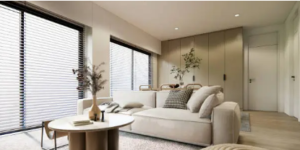 1. Understanding Adelaide’s Climate:
1. Understanding Adelaide’s Climate:
Before delving into the benefits of roller blinds for Adelaide homes and businesses, it’s essential to grasp the nuances of Adelaide’s climate. Summers in Adelaide are typically hot and dry, with temperatures frequently exceeding 30°C (86°F) and occasionally soaring above 40°C (104°F) during heatwaves.
2. Managing Sunlight and Heat:
One of the primary functions of roller blinds in Adelaide is to manage sunlight and heat effectively. Roller blinds offer adjustable coverage, allowing residents to regulate the amount of sunlight entering their living spaces. During the scorching summer months, simply lowering the blinds can significantly reduce solar heat gain, thereby minimising the need for excessive air conditioning usage. By blocking out the sun’s harsh rays, roller blinds help maintain cooler indoor temperatures, fostering a more comfortable environment for occupants.
3. Protecting Interior Furnishings:
Adelaide’s strong sunlight can take a toll on interior furnishings, causing fabrics to fade and deteriorate over time. Roller blinds act as a barrier against UV radiation, safeguarding furniture, flooring, and artwork from sun damage. By investing in quality and sleek roller blinds, Adelaide residents can prolong the lifespan of their belongings and preserve the aesthetic appeal of their interiors.
4. Enhancing Energy Efficiency:
In a city where air conditioning is undeniably a necessity during the summer months, energy efficiency becomes a significant concern for both homeowners and businesses. Roller blinds play a crucial role in enhancing energy efficiency by reducing the reliance on cooling systems. By blocking out sunlight and insulating windows, roller blinds help prevent heat transfer, thereby reducing the need for constant air conditioning usage. It not only results in lower energy bills but also significantly contributes to environmental sustainability by reducing carbon emissions.
5. Privacy and Security:
In addition to their thermal benefits, roller blinds offer privacy and security for Adelaide residents. Whether it’s preventing prying eyes from peering into your home or providing an extra layer of security against intruders, roller blinds offer peace of mind without compromising on style. With various opacity options available, residents can choose roller blinds that suit their privacy needs while still allowing natural light to filter through.
6. Aesthetic Appeal and Versatility:
Beyond their functional benefits, roller blinds also contribute to the aesthetic appeal of Adelaide homes and businesses. Available in a wide range of beautiful colours, patterns, and fabrics, roller blinds can complement any interior décor style, from modern and minimalist to traditional and eclectic. Whether you prefer sleek and understated blinds or bold and vibrant designs, there’s a roller blind option to suit every taste and preference.
7. Easy Maintenance and Durability:
Another advantage of roller blinds is their ease of maintenance and durability. Unlike curtains or drapes that require frequent washing or dry cleaning, roller blinds can be effortlessly wiped clean with a damp cloth, making them ideal for busy Adelaide residents. Additionally, high-quality roller blinds are built to last, with sturdy mechanisms and durable fabrics that can effectively withstand the rigours of daily use and exposure to sunlight.
8. Customisation Options:
To cater to the diverse needs of Adelaide residents, many manufacturers offer customisation options for roller blinds. Whether you require motorised blinds for added convenience, blackout blinds for optimal light control in bedrooms, or sheer blinds for a soft, diffused glow in living areas, there’s a roller blind solution tailored to your specific requirements.
In conclusion, roller blinds emerge as a practical and versatile solution for Adelaide’s climate, offering numerous benefits ranging from sun protection and energy efficiency to privacy and aesthetic appeal. By investing in quality and sleek roller blinds, Adelaide residents can create comfortable, stylish, and functional living spaces that are well-suited to the demands of the city’s Mediterranean climate. With their ability to regulate sunlight, enhance energy efficiency, and enhance privacy, roller blinds undoubtedly prove their worth as an essential feature of any Adelaide home or business.
Roof Access Hatches: Roof Access Hatches and Ladders
Roof access hatches provide a safe way to enter the roof in commercial and industrial buildings. Ladders or stairs are typically used to gain entry through these hatches for maintenance work and equipment installations.
Since maintenance professionals often have tools in their hands, the hatch cover must open and close smoothly and efficiently. It should also be designed to prevent the lid from slamming on someone. For more information about the roof access hatches requirements, click here.
Ladder Access
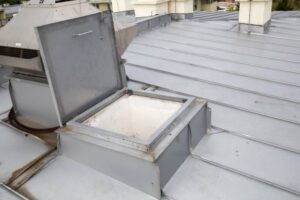 In many commercial and industrial buildings, maintenance crews must access roof equipment. Before roof hatches, this was typically accomplished using caged ladders. These were a long climb from the ground floor and limited workers’ space to move around on the roof. This made these ladders dangerous and a prime target for theft and misuse by unauthorized individuals.
In many commercial and industrial buildings, maintenance crews must access roof equipment. Before roof hatches, this was typically accomplished using caged ladders. These were a long climb from the ground floor and limited workers’ space to move around on the roof. This made these ladders dangerous and a prime target for theft and misuse by unauthorized individuals.
Thankfully, the industry has responded to these hazards by offering products that make it easier for maintenance workers to work from rooftops. One of these is a ladder safety post that attaches to the top two rungs of a fixed ladder and provides a handhold for workers as they move from the ladder to the roof.
Another essential thing to consider is the location of the ladder and the height from which it must be climbed. This is because some safety organizations require a minimum of 7″ between the bottom of the ladder and the wall it is attached to. This requirement may not be met if the conduit runs between the wall and the ladder rungs. For more information about the roof access hatches requirements, click here.
Stair Access
For occupants using the roof for lounge areas and rooftop swimming pools, a roof access hatch with stairs allows convenient access to the rooftop. Often, these hatches are combined with alternating tread stairs to provide safe and easy use for all users.
Stair access hatches are wider than ladder access hatches (approximately 30″ x 54″). They can be used with fixed service stairs or a companionway ladder to make moving people and equipment more accessible. They should also be specified with a positive latching system to prevent unauthorized access and ensure security.
For buildings that require standpipes on the roof, a hatch with an opening size of at least 16 square feet is needed for firefighter access. This requires a larger double-leaf hatch that can accommodate a ladder and is usually designed with a built-in guard rail to prevent tripping. It is also recommended that these hatches be welded to the structural steel for maximum durability.
Access for Larger Items
When equipment needs to be installed or removed from the roof of a building, a larger size of roof hatch is required. These are usually two-cover models and can be custom-fabricated to specific equipment sizes. They are often designed to allow for the placement of a companionway ladder and a fixed staircase.
They are framed and sheathed, and a pressure-treated curb is commonly included with the unit. They are a little more expensive than ladder access roof hatches but provide much better safety with guard railings and a lowered working height. For more information about the roof access hatches requirements, click here.
They are available in various materials, from galvanized steel to aluminum and stainless steel with hollow metal insulated covers. Hatches exposed to highly corrosive environments, such as in chemical plants, may be specified from a more exotic material, such as copper. They can also be glazed to enhance the aesthetic of the building.
Safety
In non-residential buildings, roof access hatches are often required for maintenance or rooftop installations. In the past, caged ladders were used to gain access to roofs, but these provided a difficult and dangerous climb up or down from the ground floor, and the cage was prone to damage by equipment and unauthorized persons. A more modern option is a roof access hatch with a safety gate, which eliminates the need to climb up or down from the building side and provides secure rooftop access for authorized personnel.
Pergolas Adelaide: Should You Consider an Attached Variant?
An attached pergola can add shade, style, and value to your outdoor space. These attached pergolas Adelaide also provide an inviting place for relaxing, dining, and entertaining.
Integrate plants and vines into your pergola to create a lush and vibrant canopy. Opt for a Mediterranean pergola with wrought iron furniture and cushions in soft pastels to add to the atmosphere.
Less Expensive
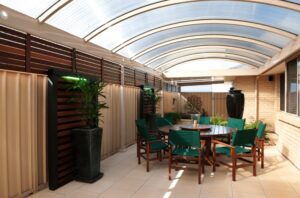 A pergola is often less expensive than other types of structures. That is particularly true for attached pergolas, which can be affixed to a deck or concrete slab, avoiding the cost of digging post holes and creating a solid foundation.
A pergola is often less expensive than other types of structures. That is particularly true for attached pergolas, which can be affixed to a deck or concrete slab, avoiding the cost of digging post holes and creating a solid foundation.
Pergolas are also less expensive than building a fence or other type of structure that covers the same area. While the labour cost to build a freestanding pergola is higher than for an attached design, this difference can be offset by using a pre-fabricated kit or by hiring a professional to build it.
The materials that go into a pergola also play a role in its final costs. For example, cedar is a popular choice because it stands up well to rot and pests but costs more than vinyl or aluminium. Aesthetics and durability are other factors that can impact price.
As with any outdoor structure, it’s important to take into account unforeseen expenses. For instance, a pergola may require a professional to install a ledger board that connects it to your home or other structure. It is an essential component because it ensures the integrity of your entire structure, which can become unstable if not properly installed. Similarly, it’s necessary to install the proper fasteners to resist wind and snow loads. These fasteners need to be premium hot-dipped galvanized or stainless steel for maximum protection and performance.
Structurally Secure
No attached pergolas Adelaide is fully protected from extreme weather conditions, but quality material, precision manufacturing, and a qualified installer help mitigate the risks of damage. By choosing a licensed contractor with experience attaching pergolas to homes, you can rest assured that your new structure will be designed and constructed to withstand strong winds without compromising the integrity of your home.
Less Required Space
A pergola is a great way to add shade and definition to your outdoor space, connecting indoor and outdoor spaces and creating a shady area where you can relax or entertain. You can purchase a pre-configured pergola kit or build one yourself with basic and intermediate building skills and materials from your local home centre. Pergolas can be built as a freestanding structure or attached to a wall. Depending on where you want to install the structure and how it will be used, you may decide that an attached pergola is better for your needs.
The advantage of an attached pergola is that it can save space and material costs. By attaching a pergola to your home, you effectively use the wall as support for the structure, eliminating the need for additional posts. It can be done with a ledger beam that is lag screwed directly to the wall or using appropriate masonry anchors in brick or concrete. Using less material also makes an attached pergola more affordable.
However, it’s important to note that an attached pergola is more permanent than a freestanding one and will require more maintenance. The wood must be repainted or stained regularly, and the rafters may need to be reinforced occasionally, particularly if you hang heavy items from them. In addition, some municipalities have regulations regarding the distance a freestanding pergola can be from your property line, and you may need to check with your local code enforcement agency before installing one.
Improved Energy Efficiency
Since they are attached to a wall of the house, attached pergolas Adelaide can act as shade and improve energy efficiency by keeping your home cooler. It helps to reduce your electricity bills and creates a more comfortable space for outdoor living.
A pergola is an ideal structure for incorporating lighting options such as string lights, recessed, or solar lights that add to the ambience and increase security when using your backyard space at night. LED lights are especially efficient, requiring less power and providing an attractive alternative to traditional incandescent bulbs.
With a little creative design, you can make your pergola into an outdoor retreat for entertaining guests or simply relaxing and unwinding in your outdoor space. If you have a green thumb, train leafy vines to grow up and over the slats or use hooks for hanging plants to add colour and additional shade. You can also add a roof cover, billowy curtains or a flat-screen TV to turn your pergola into an oasis for family movie nights.
Armchairs Adelaide: Swivel Fabric Armchairs
With its deep seat, lumbar cushion, curved back and enveloping arms, Adelaide is an invitation to relax. Upholstered in soft California fabric, it spins 360 degrees and doubles as a rocker.
Perfect in front of a window, it maximises your view and encourages conviviality. A versatile accent chair, it makes a statement in your lounge and is also an elegant addition to bedrooms or home offices. For quality swivel fabric armchairs Adelaide, check this out.
Comfort
 The lumbar cushion, curved back, and enveloping arms of Adelaide make it the ideal seat for relaxation. This small swivel fabric armchair is compact enough to fit in any space and can even double as a rocker. Upholstered with easy-to-clean Efficiency fabric, Adelaide will surely be your new favourite chair in no time!
The lumbar cushion, curved back, and enveloping arms of Adelaide make it the ideal seat for relaxation. This small swivel fabric armchair is compact enough to fit in any space and can even double as a rocker. Upholstered with easy-to-clean Efficiency fabric, Adelaide will surely be your new favourite chair in no time!
A modern take on a timeless design, Vogue’s chrome arms and base accentuate the classic fabric upholstery. This swivel fabric armchair is customisable with your choice of decorative stitching for an understated or contrasting effect. Pair this swivel accent chair with the Vogue ottoman for an effortlessly elegant look or any Urban Attitudes suite for a cozy retreat. You’ll love relaxing in this swivel fabric armchair with a book and wine.
Style
The perfect place to unwind and relax after a long day, Adelaide is inviting with its deep seat, lumbar cushion, curved back, and enveloping arms. This small swivel armchair is famous at parties and nurseries due to its rocking motion. It is built with solid hardwood and bent laminated frame secured with screws and glued for maximum durability. A contemporary silhouette with feature stitch detail, Adelaide is available in various fabrics and leather to suit any interior design aesthetic.
The perfect accent chair to complete your living room suite, Alva has a 360-degree swivel base with a circular design. Its comfortable seating and distinctive form make it a statement piece that will impress. Upholstered in your choice of fabric or top-grain leather, Alva will fit seamlessly into any space in your home. Pair it with one of our Urban Attitudes suites for a more streamlined look.
Versatility
Once reserved for home offices, swivel chairs are coming back in living spaces to offer visual and functional comfort. The ability to spin and rotate allows you to move around a room to socialise with others or relax in front of a panoramic view.
With clean club-style arms that encase a thick, welted seat, the Odessa Accent Chair is the perfect blend of traditional comfort and modern style. It can be configured as a stationary, swivel or rocker and upholstered in various fabrics.
Customisation
More than just a seat, the suitable armchair can also be a decorative feature. Choose from various options to enhance the appearance of your chosen chair, including decorative stitching in contrasting or matching colours.
A new twist on a classic, this versatile swivel fabric armchair is both functional and fashionable. Featuring a round back and curved barrel shape, it has neatly tailored shaping on the arms and lumbar cushion for comfortable support and a contemporary look. For quality swivel fabric armchairs Adelaide, check this out.
Shown in signature velvet with studding, this swivel fabric armchair offers the perfect combination of comfort and style. Available in a wide range of fabrics, this is the ideal chair to suit any interior scheme. As shown in Veluto fabric #VE007, the price will vary depending on your fabric choice. Match with the Channel Sofa for a stylish and sophisticated seating solution. This swivel fabric armchair is made in Italy. Delivery is free within Australia.
Articles
Make a statement with Adelaide, a modern swivel fabric armchair that’s as comfortable as it is stylish. With its deep seat, lumbar cushion, curved back and enveloping arms, it’s an invitation to relax with your legs stretched out on the matching rocker (also a swivel). It is upholstered in soft California fabric.
Designed with luxury in mind, this accent chair offers a warm and embracing rounded back for comfort, while the plush seat is crafted with soft cushioning for an ideal seating experience. A premium swivel base allows you to spin around in your preferred seating position.
The Importance of Mirrors
Mirrors are flat objects used to reflect light. People use mirrors for numerous reasons, such as to check their appearance and for other purposes.
Many UnleyGlass mirrors Adelaide feature curvatures that may be either concave or convex.
For a mirror to reflect light effectively, its surface must be microscopic smoothness – this property is known as specular reflection.
Origins
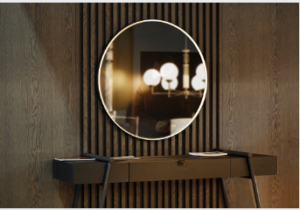 Mirrors have long been seen as symbols of vanity and self-awareness in society. Yet, their history can be troubling – not only due to the dangerous mercury used to line mirrors or reported murders in 17th-century Europe – but because mirrors can be fragile objects that pose risks when misused without appropriate safety precautions.
Mirrors have long been seen as symbols of vanity and self-awareness in society. Yet, their history can be troubling – not only due to the dangerous mercury used to line mirrors or reported murders in 17th-century Europe – but because mirrors can be fragile objects that pose risks when misused without appropriate safety precautions.
People may have first used mirrors around 8,000 years ago, according to vision scientist Jay Enoch in 2006. Most likely, these early mirrors consisted of water bodies or rock or clay containers reflecting light toward their source. In being effective as mirrors, surfaces must be flat, with roughness no more significant than half the wavelength of light passing through them.
People began producing glass mirrors of significant size only during the 16th century, initially in Italy, before expanding to England, France and Venice. Although early glass mirrors may have been slightly discoloured and bubbly at first, these early pieces still proved far more straightforward than any made from polished copper or bronze in Mesopotamia or Egypt up to 3,000 BC or China from 2000 BC onwards.
Mirrors with silvered surfaces that we now enjoy in our homes originated in Germany in 1835 when Justus von Liebig developed a process for coating one side of the glass with metallic silver. Later this technique was modified and refined until finally leading to what is known today as silvered-glass mirrors.
Materials
Mirrors have traditionally been constructed from glass. Glass is an affordable, easily formed material that transmits light – making it the ideal material to serve as a reflective surface.
Metal-coated glass mirrors were first developed around the 1st century AD. But it wasn’t until the advances of glassblowing and silvering enabled large-scale production until around the 13th to 15th centuries AD. Through silvering processes, metallic silver is deposited on surfaces. Although silvering is most popularly employed to produce mirrors, other metals like tin and copper may also be utilised to craft them.
Once a mirror has been designed and assembled, a coating process to enhance its reflectivity is undertaken. This step varies according to its intended use; such methods might involve anti-reflective coatings, anti-scratch layers or dielectric layers, which improve reflection for specific wavelengths.
Proper use of mirrors can transform rooms to appear larger and brighter. They can also serve to highlight decorative objects like paintings or antique furniture. When selecting a quality mirror with an even surface, ensure clear reflections. Regular cleaning with a glass cleaner will keep it looking its best!
Reflection
UnleyGlass mirrors Adelaide can be defined as anything that reflects most of the light that hits it without absorbing or scattering, much like the glass is known for doing. While glass may be cheaper and easier to find than metal-like counterparts, its reflection capabilities must still be very similar. Rough surfaces only reflect limited amounts of light.
Figure 2 illustrates this principle with visible light waves hitting a smooth mirror surface and being reflected off it with equal incidence angles, as defined by how flashlight beams appear when directed toward them.
Both wave and particle theories explain reflection. According to the wave theory, light waves emitted by light sources hit the mirror surface and reflect off its consistency in all directions before being inverted back-to-front by reflection and producing the mirror image seen by observers.
To experience it, place your right hand in front of a mirror and ask a friend to stroke, pinch, tap, or rub your hand while looking at its reflection. Your reflection should match whatever was occurring with your hand while nothing happened there.
Perception
UnleyGlass mirrors Adelaide reflect all colours comprising visible wavelength white light without absorbing any. As a result, mirrors create what is known as a virtual image: an illusion that objects behind its surface face in front of it and towards an observer. This effect occurs due to light rays colliding with our retinas to produce interference patterns like those shown below.
An unusual and counterintuitive effect created by mirrors is their ability to invert any object that appears lateral and inverted within their virtual images, as demonstrated in this demonstration of “mirror swap”. Raising one’s left hand in front of the mirror causes its virtual image to rise in the opposite direction, as illustrated here:
Essential Aspects of Garden Design
Designing a garden is an intricate process that blends aesthetic and horticultural expertise with knowledge of the landscape and its purpose.
Designers employ principles of form, function, balance and symmetry to create a sense of place. The garden design SA structure is a three-dimensional consideration that considers the shape and volume of plants and other landscape features.
Sense of Place
 One of the essential elements in garden design is creating a sense of place. It can be accomplished through art, such as mirrors, terra-cotta pots, carpentry and ironwork that reflect natural elements found nearby, and sculptural pieces inspired by copper, limestone, local architecture and flowing water.
One of the essential elements in garden design is creating a sense of place. It can be accomplished through art, such as mirrors, terra-cotta pots, carpentry and ironwork that reflect natural elements found nearby, and sculptural pieces inspired by copper, limestone, local architecture and flowing water.
Many gardeners strive to create a sense of place in their spaces, yet this can be challenging due to the difficulty in getting plants to blend visually. To avoid this issue, selecting plants carefully is essential for successful results.
Landscape architects and designers should strive for the Gestalt amalgam – this holistic goal or objective that creates a sense of place in designed landscapes. The three essential components of this sense of place are significance, physical attributes and function as one cohesive whole.
It can be challenging to achieve this, but you will work towards it with the right landscape architect and designer. Ultimately, all three components must come together harmoniously for a sense of place to be created.
Form
The garden design SA uses form to describe the aesthetic qualities of an object that create a sense of space. It encompasses the overall outline of structures, plant beds, garden ornaments, and their three-dimensional mass.
In a formal garden, geometric shapes such as circles and squares may be mixed with polygonal forms that are more informal and naturalistic. The amount of negative space between objects further distinguishes shape and form.
Another factor that can influence garden form is colour. Modern gardens typically opt for a minimalist colour palette to achieve an even aesthetic.
Colour can draw attention, direct views, and emphasise certain features. For example, focal points – which draw the eye towards a specific place in the landscape – can be created with vibrant hues like yellow and red.
The line is essential in landscape design, conveying movement and widening the view. Curved lines can help shape informal garden beds and add interest to paths, while straight ones elicit a more formal air.
Vertical lines draw the eye upward, creating a sense of spaciousness and energy in any space. Walkways, hedges and short garden walls can all serve to develop vertical solid accents that connect areas while also creating visual separations.
Rhythm is the repetition of materials and elements such as mass, form, line, texture and colour. It can range from using the same hue or fabric in different places to more intricate structures like repeated patterns and motifs.
Function
The function is a design principle that must be considered when planning a garden. It means creating spaces with specific purposes in mind and considering all elements in their context relative to one another.
Lines are an integral element in function design, helping to guide the eye and create movement or a sense of rhythm. Lines can take shape from trees to fences or horizons and influence how people move through gardens.
Children’s function design can include areas for play, like a sandpit or swing. It may also feature areas where they can learn or practice their favourite sports like putting, tennis or basketball.
Plantings should serve a purpose beyond decoration in functional gardens, with exciting leaf shapes, colours and textures that provide visual interest all year long. Furthermore, plants should be hardy and tolerant of dry sun or wet shade conditions.
Designers face a formidable challenge when it comes to function when creating gardens. Mastering scale, proportion, balance, seasonality and horticulture requires someone with expert knowledge who can consider all elements holistically. Additionally, flexibility must be built-in so the garden can evolve as plants and materials mature and adapt. An experienced designer with knowledge of such matters can only acquire this knowledge.
The Advantages of Nordic Design Wardrobes
Nordic design wardrobes are a great way to separate rooms. They feature a sliding door and can be used as room dividers or storage units, and these wardrobes are available in different sizes to accommodate different-sized rooms. Many include hanging rails, shelves, and storage boxes with lids. They are also in warm bamboo colours to add airiness to any room.
Folding and collapsible room dividers are other clever choices. These partitions can be a great way to divide a large room from a smaller one, such as a study room or living room. Folding screens can also be adorned with decorative panels to make them more attractive.
If you’re renting your home or living in a small apartment, you can use room dividers to maximize available space. You can also use a couch or furniture as a room divider. You can even use IKEA shelves to separate a room into two separate zones. Alternatively, you can use large bookcases as a room dividers. They will give you more storage space while giving you more privacy.
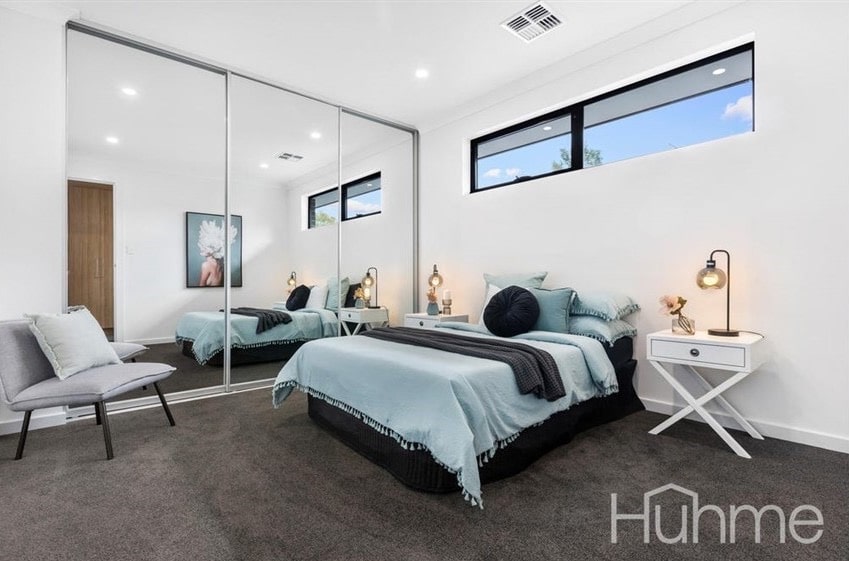
Whether you’re using a wardrobe as a room divider or a display space, a Nordic design wardrobe can be a stylish option. People often use room dividers to make their rooms more spacious and create new areas within a room. This method of partitioning rooms combines functionality and design and is a perfect solution for any environment.
It is made of wood
Scandinavian designers have a long history of creating stylish, functional nordic design wardrobes Adelaide made of wood. Their designs are usually made from sustainable, sustainably-managed forests. Each piece combines a modern Scandinavian aesthetic with natural materials. Many Scandinavian designers use wood and other natural materials to highlight the region’s natural beauty.
The wood used in Scandinavian design is often light in colour, which adds to the warm look of the furniture. Scandinavian designers do not use overly detailed designs and favour simple, solid pieces. In addition to wood, you’ll find wicker, cotton, and wool pieces. Combined with natural light, these pieces will create a relaxing environment.
The philosophy behind Scandinavian design emphasises the harmony between man and nature. Their designs feature light colours and fine lines combined with minimalist furnishings to make a space that lasts for years. In addition, Scandinavian designs are environmentally friendly, and each purchase helps to plant seven trees. As a result, Scandinavian furniture is often sold at affordable prices.
Whether you’re looking for wardrobes made from wood or some other natural material, Nordic design is a great choice for your home. Wood is a natural material that is durable and long-lasting. It is also an excellent option for homes with small children.
It has good thermal insulation
The Nordic design style is known for its minimalist, clean-lined wardrobes. Its simplicity and clean lines make it a great choice for any room. In addition, this style offers generous hanging space and two drawers for your clothes, and it is perfect for any primary bedroom, guest room, or child’s room.
It is modern and striking in appearance
Often characterised by a neutral colour scheme, Nordic design features whites, greys, and tans. Sometimes bold colour is used to add more visual interest to the space. The use of natural light enhances the overall look of the room. White walls emphasise available light, and minimal window treatments allow the natural light to flood the space. Danish furniture design is a great example of this trend. It features soft, wood-toned fabrics, subtle curves, and tapered legs.
Scandinavian designs are inspired by lighter pastels and neutrals, earthy golds, and rich cream shades. Colours that contrast greatly are also characteristic of this trend. If you are unsure what colours to choose, consider starting with light, neutral colours and enhancing them with richer shades. In addition to using bright and bold colours, the Scandinavian design also emphasises craftsmanship and artistry.
Scandinavian design has a strong connection with nature. Children in the Scandinavian countries often spend time outside, even in the coldest winters. As a result, their designs draw inspiration from the outdoors. This style uses natural materials and emphasises its connection to nature. It is one of the main reasons why the Scandinavian design movement is so popular.
Scandinavian design also incorporates wood throughout a room. This wood is typically used for walls and floors. Wooden toys can also be placed around the room as playful accents. Wood is often paired with soft materials, and light wood is the most common. The addition of plants and botanicals also adds to the minimalist and natural nature of the Scandinavian design.
It is well-furnished
Nordic design is based on making things last longer and creating a simple and uncluttered environment. This style combines a natural feel with minimalist elements that are also functional. It encourages a healthy lifestyle and reduces the effects of excess consumption. It’s also a way to deepen your connection with nature.
Types of Carports in Murray Bridge
You have many options if you are in the market for carports Murray Bridge, NSW. You can choose from various styles and materials, including steel, wood, and aluminium. There are also many roofs available, so you can choose a roof style that best suits your needs.
Canopy-style carports
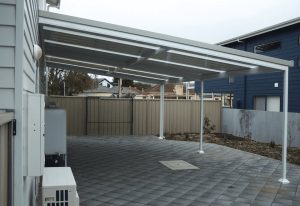 Canopy-style carports are a great way to protect your car from the elements and add a stylish accent to your home. Canopy-style carports are easy to install and cost less than steel carports. Some canopies even come with a warranty. These carports are made of different materials, such as wood or aluminium, and they can also be painted in any colour to match the style of your home. Buy quality carports Murray Bridge at https://aldingahomeimprovements.com.au/carports-murray-bridge.
Canopy-style carports are a great way to protect your car from the elements and add a stylish accent to your home. Canopy-style carports are easy to install and cost less than steel carports. Some canopies even come with a warranty. These carports are made of different materials, such as wood or aluminium, and they can also be painted in any colour to match the style of your home. Buy quality carports Murray Bridge at https://aldingahomeimprovements.com.au/carports-murray-bridge.
True Blue Sheds Murray Bridge has many types of carports for your home. They offer a variety of designs and roof styles, as well as roller doors. So whether you want to protect your car or store tools, these carports are an excellent choice.
Prices for carports at Murray Bridge can range from $1,000 to $5,000. Prices depend on the size of your structure and the materials used to build it.
Metal carports
Metal carports can provide many benefits to homeowners. First, they can protect your vehicles from inclement weather better than a wood carport. Wood is susceptible to moisture, which can lead to rot and requires annual treatment. In contrast, metal does not warp, split, or rot, making it a more environmentally friendly option for your home. It also helps save trees from destruction and maintain a healthy environment.
Metal carports are durable and can be used for decades. Because they are made of galvanized steel, they will not rust or break down over time. The galvanization process adds a protective layer of zinc to the steel to protect it from damage. Unlike wooden carports, metal carports can be customised to fit any property.
The design of a carport can be just as important as its material. While most carports are used to protect cars, you can choose to make it look nicer by choosing one with a canopy style. This style is often more attractive and can be painted in any colour you want. It is also available in different materials, including wood, steel, and canvas. Buy quality carports Murray Bridge at https://aldingahomeimprovements.com.au/carports-murray-bridge.
Wooden carports
Buying a wooden carport can help you protect your car from the elements. It can be an economical option, but you will have to consider the price of hiring a contractor. While hiring a contractor will increase the price of the carport, it will also provide peace of mind. Aside from building a durable wooden carport, you can also choose between various designs.
The first step in building a carport is to plan the structure. This will help you determine the right type of material for the carport. Wood is the most common material used for carports. This type of material can withstand even the harshest weather conditions. It is also cheaper than other materials.
Another important factor in choosing a carport is size. You must choose one large enough for the number of cars you plan to park. It should also have enough room to walk around your vehicle. Also, you need to consider the climate of your region. For example, if you live in a tropical area, ensure that the carport you buy is durable enough to withstand severe weather conditions. It is also important to consider your budget. Some materials are more expensive, but they may offer better protection.
Aluminium carports
Aluminium carports at Murray Bridge provide various benefits that make them a great option for car storage. They are rust-resistant, sturdily constructed, and long-lasting. They come in various styles, including classic, hip and gable, and single gable. They are also available with different types of roller doors.
When looking for carports Murray Bridge, searching online directories for local companies is a good idea. These directories will let you filter your search by location, specialty, and service options. You can also read reviews of different companies. As a result, you will better understand which carports are the best.
A great way to customise a carport is by choosing materials and colours that complement the style of your home. Some manufacturers offer a variety of colour schemes for their structures. You can even choose the colour of the side panels and walls. Buy quality carports Murray Bridge at https://aldingahomeimprovements.com.au/carports-murray-bridge.
Is OldPortRoofing Roof Repair Adelaide Necessary?
You may wonder whether OldPortRoofing roof repair Adelaide is necessary for your property. Here’s a guide to roofing Adelaide, including Types, Duration, and Reputation. If you want to make sure your roof will last for a long time, you should consider hiring a professional. Fortunately, there are a lot of good options in Adelaide. Read on for the tips you need to make the right decision. You’ll be glad you did!
Cost
 Several factors determine the cost of roof repair. For instance, repairing a damaged tile on your roof can cost anywhere from $200 to $500, depending on the damage and how much work is required. In addition, metal roofing requires repair work that can cost from $48 to 58 per square metre. Roofing repairs are important for many reasons, including protecting your home against the weather. If you consider a new roof for your Adelaide property, consider the costs involved.
Several factors determine the cost of roof repair. For instance, repairing a damaged tile on your roof can cost anywhere from $200 to $500, depending on the damage and how much work is required. In addition, metal roofing requires repair work that can cost from $48 to 58 per square metre. Roofing repairs are important for many reasons, including protecting your home against the weather. If you consider a new roof for your Adelaide property, consider the costs involved.
Roofing Adelaide costs vary significantly depending on the type of roof you have. A simple roof, such as a hip or a skillion, costs less than a complicated one. Simple roof styles can match most styles of houses in Adelaide. And they are typically less costly to replace than more complex styles. Here are some tips for finding the best deal on a new roof. Just remember to compare prices and quality to ensure you get a good value for your money.
Types
If your roof is leaking, peeling, or damaged, you may be wondering what types of roof repair Adelaide services you can get. Luckily, Adelaide roofing contractors are well versed in all types of roof repairs. These experts have the experience you need to get your roof looking great again, from residential roof restoration to commercial roof repair. Whether you need your roof repaired or completely replaced, there are some tips to keep in mind that can help you choose the best OldPortRoofing roof repair Adelaide company.
You may have a roof leak if you notice a brown water ring on your ceiling. Any discolouration on your ceiling is an indication of a roof leak. Exterior wall spots or cracks could be a sign of a faulty roof. Mould or moss may also indicate an issue with your downpipe or gutters. Fortunately, most roof repairs Adelaide services are affordable, so they are worth looking into.
Duration
If you consider getting a new roof for your home in Adelaide, you may be wondering how long it will take. Thankfully, there are many ways to determine if your roof needs repair. The first step in determining the duration of a roof repair is knowing what to look for. Water stains on the ceiling are usually a brown ring shape, but any discolouration could signify a roof leak. Exterior walls may also have spots or cracks and moss or mould. If your roof leaks, the damage is most likely caused by gutter and downpipe issues. If you notice any of these signs, you should hire a professional to handle your roof repair Adelaide.
In addition to addressing leaks and roof repair Adelaide experts offer various other roofing services. Adelaide roofing specialists can replace, reinstall, or clean iron roofs if you have a tiled roof. They can also apply high-pressure cleaning to give your roof a new look. A completely sealed roof will protect your home from not only the elements but also your property from the wind. With an Adelaide roofing specialist, you can be sure your roof will be a safe, reliable place for your family and business to reside.
Reputation
You can’t go wrong with an OldPortRoofing roof repair Adelaide service if you want to find the best. There are a few things to consider when choosing a roof repair Adelaide service. First, make sure they are fully insured for 20 million dollars. Another thing to consider is their reputation. Is their reputation good? If so, they should have many satisfied customers. Another thing to consider is their tradesmen’s level of professionalism and expertise.
Another thing to look for in an Adelaide roofing service is how reliable they are. If a service can’t guarantee that they’ll come back in a few days, there’s a high chance they’re not the best. Fortunately, there are many Adelaide roofing companies with solid reputations. These companies can solve even the tiniest problem with their extensive experience. That’s good news for you, as you won’t have to spend hours on the phone trying to figure out the problem.
Finding a contractor
Whether you are looking for roof restoration services in Adelaide or a simple repair on your home, a qualified roofing contractor is a great place to start. These professionals specialize in all aspects of roofing, and they are fully insured for up to 20 million dollars. They are also reliable, courteous, and members of both the Master Builders Association and the Occupational Health and Safety Association. They can help you identify the right roof repair contractor for your needs and provide you with the proper advice on what to do.
Some signs are that a roof is due for repair, including water stains on the ceiling. These spots are typically brown and ring-shaped. Other common problems with your roof include cracks in the roof or spots on exterior walls. If you notice moss or mould on your exterior walls, you should contact a roofing contractor to assess your problem. A leaky roof can cause a lot of unnecessary grief, so finding a roof repair contractor is critical.